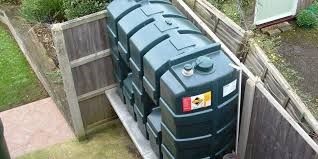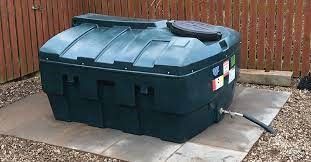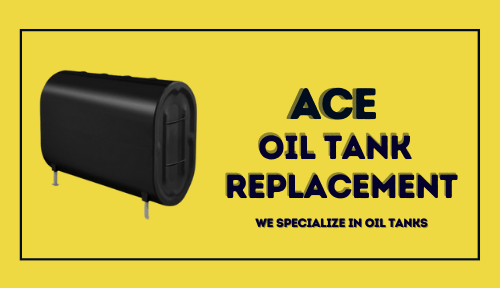Heating Oil Tank Replacement: What You Need to Know
When considering heating oil tank replacement, it's crucial to choose a reliable service provider that guarantees safety and efficiency. Our team specializes in seamless installations to ensure your home heating needs are met with quality and reliability.
Welcome to our guide on heating oil tank replacement. If you're a homeowner with an old oil tank, or if you're buying a house with one, this is for you. We'll talk about why replacing your tank is important, the costs involved, tank types, sizes, and more. By the end, you'll know everything you need to make a smart decision about your heating oil tank.
Key Takeaways
- The average cost for a 275-gallon oil tank replacement in the Northeast ranges from $3,600 to $3,850.
- Indoor oil storage tanks typically have a lifespan of 30 years, but their longevity is often shorter.
- Aboveground tanks exposed for over 10 years should be replaced due to rust issues.
- Cleaning up an oil leak can cost between $20,000 and $50,000, emphasizing the importance of timely tank replacement.
- Heating oil costs have remained relatively stable, making it a cost-effective heating option for homeowners.
Introduction to Oil Tank Replacement
Swapping out your heating oil tank is crucial. This task should never be forgotten. Aged or broken tanks can be risky to both safety and the environment. It's key to switch them out on time. The choice to change your oil tank depends on how old it is, its state, and where it's placed. Checking it often can uncover problems like rust or leaks. This points to the need for a new tank. Also, updates in rules may mean you need a better, eco-friendly model.
Importance of Timely Tank Replacement
Ignoring your oil tank can lead to big problems. Leaks from these tanks can ruin your property and environment. This then causes costly cleanups and troubles with the law. For instance, a small oil spill indoors could cost thousands. And a big leak outdoors might mean over $40,000 in cleanup fees. The owner must pay for damages, letting others know, and fixing the environment.
Factors Influencing Replacement Decisions
Lots of things can affect whether you need a new oil tank. How old the tank is matters a lot. Older tanks might leak easier. The place of the tank, above or below the ground, can make a difference too. This affects how long the tank will last and how hard it is to get a new one installed. Get your tank checked by pros to make sure it meets current rules and practices. This also helps you decide if a new tank is needed.
Future home buyers should check the oil tank's condition and age. This helps avoid unexpected costs later on. Moving a tank without properly closing the old pipe caused a major spill. This disaster led to costly repairs and cleanup. It shows why upkeep, checks, and following the rules are so important.
Types of Oil Tanks and Replacement Costs
There are two main types of heating oil tanks to think about: above-ground and underground. Your choice will change how much the replacement costs.
Above-Ground Outdoor Oil Tanks
To replace an above-ground tank, you may spend between $1,250 and $2,500. This includes installing a concrete base for safety. It prevents leaks. Before you start, check the replacement site for any special needs. You might also need permits from the fire department.
The replacement involves removing oil, the tank, then setting up the new one. This includes pipes and lines, checking for leaks, and a system test. You might add a rain shield or a tank tube for protection.
Underground Oil Tanks
Removing an underground tank is tougher and can cost more. It might cost between $1,500 and $4,000, because you have to dig it up. The size of the tank affects the price. For example, smaller tanks removal costs are between $400 and $1,200. Larger tanks can cost more, from $2,800 up to $3,000.
The cost can change based on how much oil is in the tank, how easy it is to reach, and if the soil needs fixing. You may also need to pay for soil tests, which vary depending on where the tank is.
Indoor oil tanks usually last around 30 years, but they could last longer with care. Some can make it to 20 years or more. Making sure you maintain your tank is key. Remember, taking out an oil tank is not a DIY project. Always get help from experts in disposing of them.
"Roth heating oil tanks can last up to 15 years or longer with proper care. They have double walls to keep oil in and are reliable."
For a new tank like a Roth, you might spend around $3,500. A 275-gallon tank can cost between $3,000 and $3,400. It's important to have your tank checked often, especially if it's more than ten years old. Make sure the installation is done by someone who follows the safety rules.
| Tank Type | Replacement Cost | Additional Factors |
|---|---|---|
| Above-Ground Outdoor Oil Tank | $1,250 - $2,500 | Concrete base installation |
| - Permits from local fire department | ||
| Underground Oil Tank | $1,500 - $4,000 | Excavation costs |
| - Tank capacity | ||
| - Soil testing and remediation | ||
| Roth Heating Oil Tank | $3,000 - $3,400 (for 275-gallon tank) | Longer lifespan with proper care |
| - Double-wall design for reliability |
Tank Size Considerations for heating oil tank replacement
When replacing a heating oil tank, its size is key to think about. Tanks for heating oil in homes can hold 275 to 330 gallons. Bigger tanks cost more to replace generally. Normally, a home with one to two bedrooms has a 275-gallon tank. If your home has three to four bedrooms, it might need a 300 to 500-gallon tank.
Above-ground tanks can hold up to 550 gallons. Underground tanks are bigger, often over 1,000 gallons. When you calculate how much fuel you need, add at least 20% for safety. And if your family is growing, plan for a tank that's 30% bigger to meet your heating needs.
It's very important to get advice from experts when picking a tank size. They can help you avoid problems like leaks and freezing. Tevis Energy, for instance, serves central Maryland and southern Pennsylvania. They provide not just oil but also great advice on tank selection and installation.
| Tank Size | Typical Home Size |
|---|---|
| 275 gallons | 1-2 bedrooms |
| 300-500 gallons | 3-4 bedrooms |
| Up to 550 gallons | Above-ground tanks |
| Over 1,000 gallons | Underground tanks |
Choosing the right heating oil tank size is crucial. Think about your home size, how much fuel you use, and future needs. With the help of professionals, you can ensure your heating system runs well for many years.
Key Factors Affecting Replacement Costs
Replacing your heating oil tank's cost depends on many things, like labor and tank type. The job's complexity and the contractor's skill can make labor costs vary from $850 to $1,800. The kind of tank and where it sits can also change how much you pay.
Labor Costs
The price for labor in swapping a heating oil tank can change a lot. It varies based on the task's difficulty and the contractor's know-how. Usually, it costs between $850 and $1,800. More experienced pros might charge more. Tanks under the ground or inside might need special tools, which costs more money too.
Tank Type and Location
The tank's type and where it's placed greatly affect the cost of swapping it. Tanks outside and above the ground are cheaper to replace than those inside or below ground. This is because they often need digging or special setup. Also, bigger tanks mean a bigger bill.
| Tank Type | Replacement Cost Range |
|---|---|
| 275-gallon above-ground | $1,500 |
| 330-gallon above-ground | $1,850 |
| 550-gallon above-ground | $2,000 |
| Underground | $2,500 - $5,500 |
The tank's place and how easy it is to get to also change the cost. Above-ground tanks outside are usually cheaper to work on. That's because indoor or under-the-ground tanks can need more work or special actions.
The final price for replacing a heating oil tank can change a lot. This is because of many things, like needing to dispose of old oil or clean up leaks. Doing regular checks and taking care of your tank can help it last longer, avoiding big replacement costs.
Additional Costs to Consider
When you're planning to replace your heating oil tank, remember there are more costs than just the tank and labor. You'll need to pay for getting rid of the old tank and oil, and for any required permits. It's also important to make sure you're following the local building codes.
Oil Disposal
Getting rid of the old oil tank and its contents is a key part of the process. The cost depends on the tank's weight and how much oil is left inside. Usually, this service can cost between $1,700 and $2,000.
Permits and Code Requirements
In most areas, you need permits and must meet the building codes for your new tank. The permit fees might fall between $500 and $2,000, depending on your home's location and the job's complexity.
If you need to change the fuel line or other parts for the new tank, the cost will go up. Think about environmental rules and possible insurance needs, too. These can also shape how much you might spend when replacing your oil tank.
Knowing these extra costs can help you plan and budget better for your new heating oil tank. Make sure your project meets all the requirements for a smooth and hassle-free replacement.
Signs It's Time for a Heating Oil Tank Replacement
Knowing when to replace your heating oil tank is key to staying safe and eco-friendly. A heating oil tank usually lasts 10-15 years if it's well taken care of. Look out for any outside damage, like rust, or dents as they show it might be time to switch. If you spot leaks or smell heating oil, those are big clues that your tank might need changing.
Tank age matters a lot. By the time it hits 10-15 years, you should think about getting a new one. Normally, a well-installed and serviced tank can make it 20-25 years. But how it's maintained and its setup can change this.
If the tank's legs or parts like fuel gauges start acting up, it might be time to replace it. Sometimes the oil just doesn't burn as well as it should, signaling an issue. Clogs or issues with the oil lines can also show it needs changing. And don't forget, weather can also wear down your tank, making it necessary to replace.
Regular checks and quick fixes are crucial for a working heating system. It's much better to replace the tank before it leaks, saving you money and stress. Cleanups from leaks can be very expensive.
Not sure if it's time to get a new tank? Talking to an expert can help. Fixing small problems early can prevent big ones, keeping your home warm and safe.
Conclusion
Swapping your heating oil tank is a big deal for homeowners. It's key to think about a few things first. Tanks usually last 15 to 25 years. Yet, those over 20 years old might start to fail. So, it's wise to change them out. The cost is about $1,500 to $4,000, which includes a new tank, labor, and getting rid of the old tank. If you have an above-ground tank, changing it tends to be cheaper than if it's underground. This is because digging and soil checks are not needed as much.
When you're picking out a new tank, think about the material. Steel is easier on your wallet when buying it. But it needs more care than fiberglass tanks. Newer oil tanks are safer, last longer, use less energy, and protect nature better. Getting a new tank also means you keep up with the latest safety rules in many places. Look for signs like rust, leaks, or using more oil than before. These can mean you need a new tank.
Working with a skilled pro is vital for a smooth oil tank switch. Make sure to check on the company, get recommendations, and see if they are properly licensed and insured. This is crucial for doing things right. Fixing issues with your tank in time and picking a good new tank can keep your heating running smoothly. It also helps keep the planet safe from oil messes.
FAQ
Why is it important to replace an aging heating oil tank?
It's vital to change an old heating oil tank to avoid safety and environmental risks. These tanks can leak, causing hazards and environmental problems. By acting quickly to replace the tank, you keep your home's heating system safe and efficient.
What factors influence the decision to replace a heating oil tank?
The age, condition, and location of the tank are big influences. A tank's age and its visible condition, like rust and leaks, matter a lot. Regular checks can highlight these problems and signal the need for a new tank. Also, new environment laws might make you switch to a greener type.
What are the different types of heating oil tanks and their replacement costs?
Above-ground and underground tanks are the two main types. Replacing an above-ground tank usually costs between $1,250 and $2,500. For underground tanks, the cost ranges from $1,500 to $4,000 due to the digging needed. Tank size and where it's placed will also affect the cost.
How do I determine the appropriate size of a replacement heating oil tank?
The size of the tank depends on your home's needs. Most home tanks hold between 275 to 330 gallons. A smaller home might need a 275-gallon tank, while larger homes could use a 300 to 500-gallon tank. Picking the right size ensures your heating is efficient and cost-effective.
What key factors affect the overall cost of replacing a heating oil tank?
Many things affect the price, including labor and tank type and placement. Costs for the replacement labor can be from $850 to $1,800. The type of tank (single or double wall) and where it is (like in the ground) also change the price.
What additional costs should I consider when replacing a heating oil tank?
When replacing your tank, remember there are more costs than just the tank and labor. You must dispose of the old tank properly, which can have a fee. Also, getting permits and meeting building codes can add expenses.
How can I tell if it's time to replace my heating oil tank?
If your tank has visible damage like rust or leaks, it may be time to replace it. The tank's age, typically 10 to 20 years, is also key. Regular checks and quick problem-solving will keep your heating system working safely.
Oil Tank Replacement Companies and Heating Oil Tank Replacement Services
We are a full-service aboveground oil tank replacement company offering professional oil tank installations, replacements, and removals conducted in accordance with all local codes and environmental regulations. Our experts can assist you with a range of needs, including selecting the most appropriate oil tank system for your home or business, tank inspections and leak detection, proper disposal of contaminated used tanks, and more.
Contact us if you require fast, affordable, and reliable replacement process, residential oil tank or commercial oil tank, oil tank removals, repair and oil tank replacement services, installation of the new tank, inspect your tank, oil tank replacement process, or any oil tank service you need in Springfield MA.



